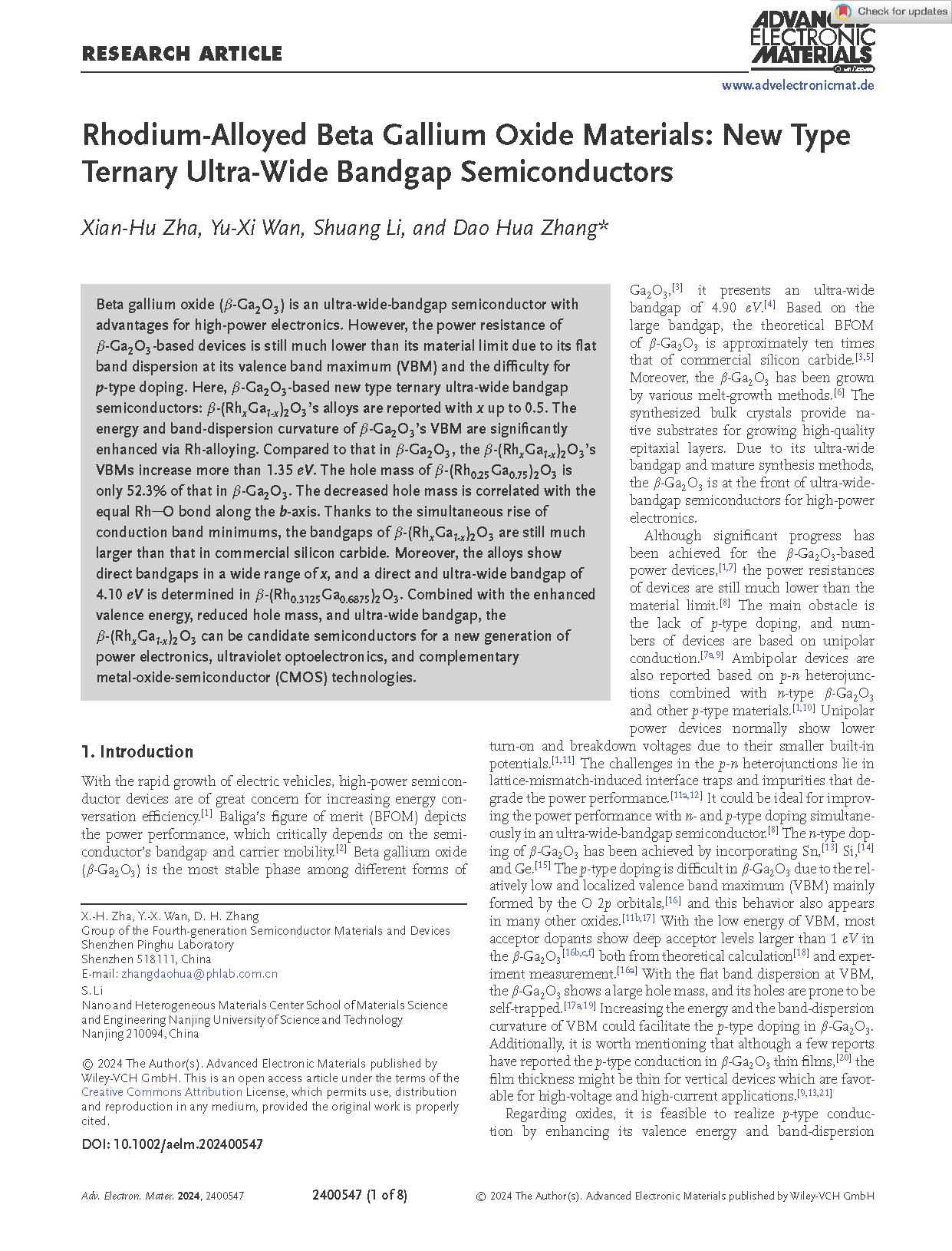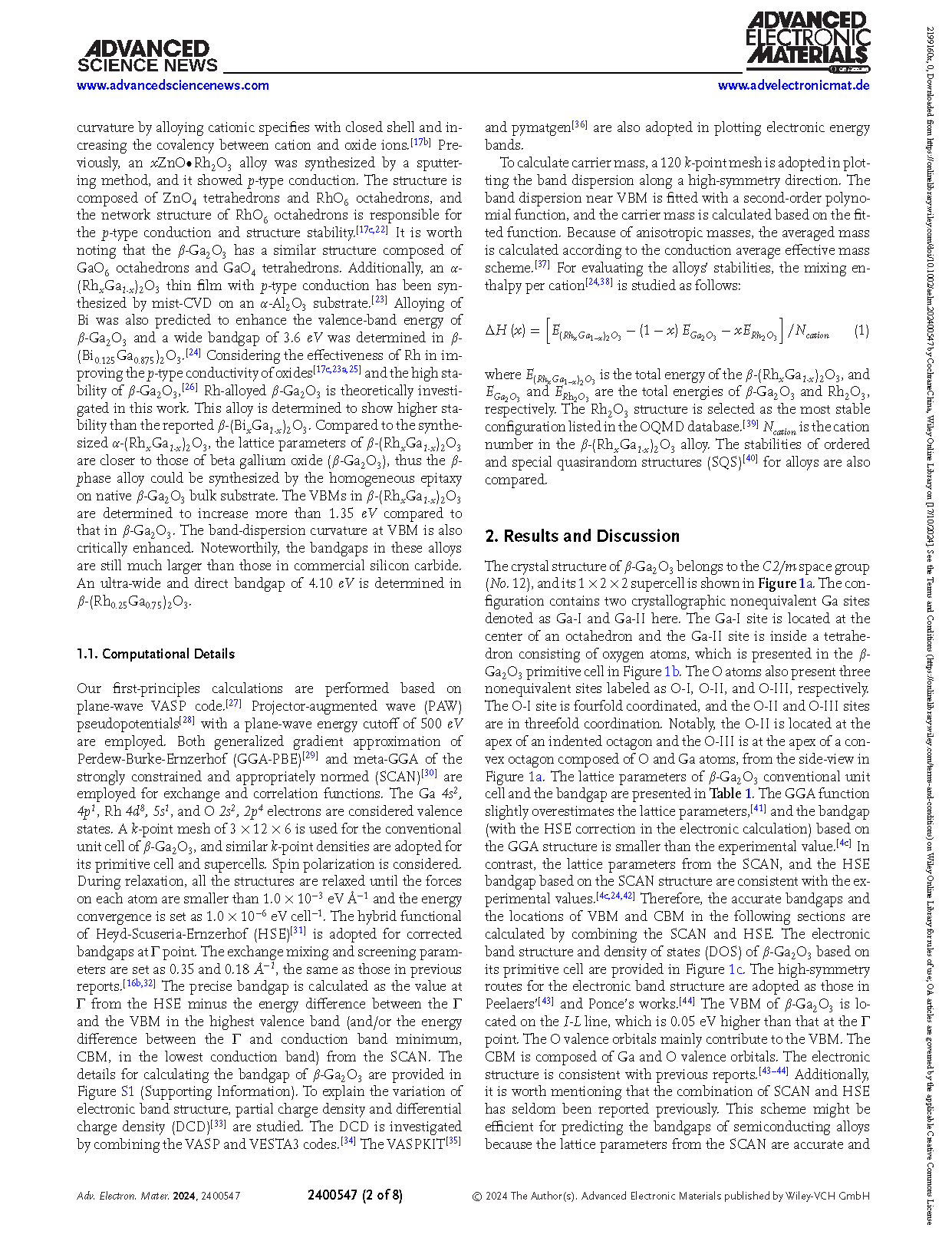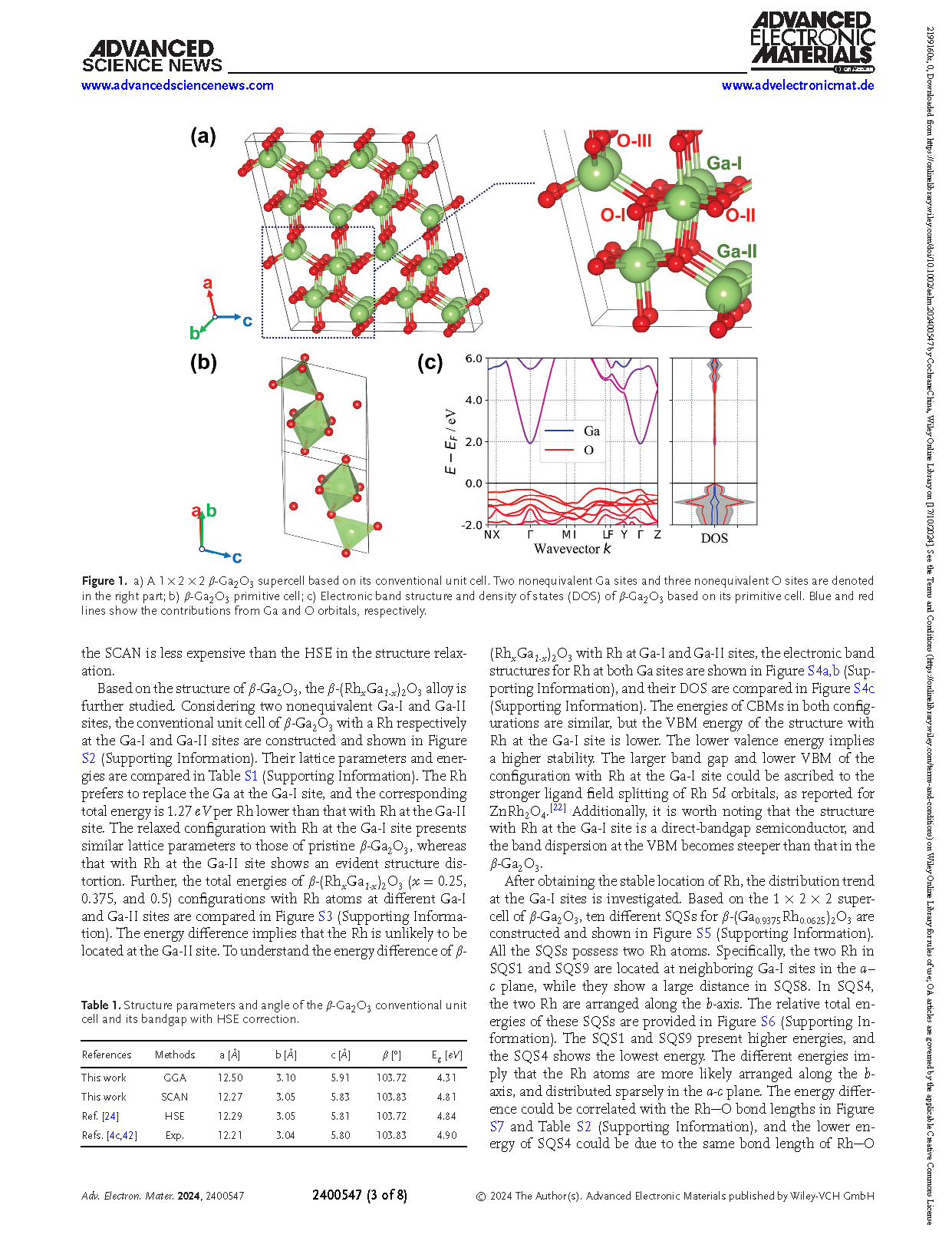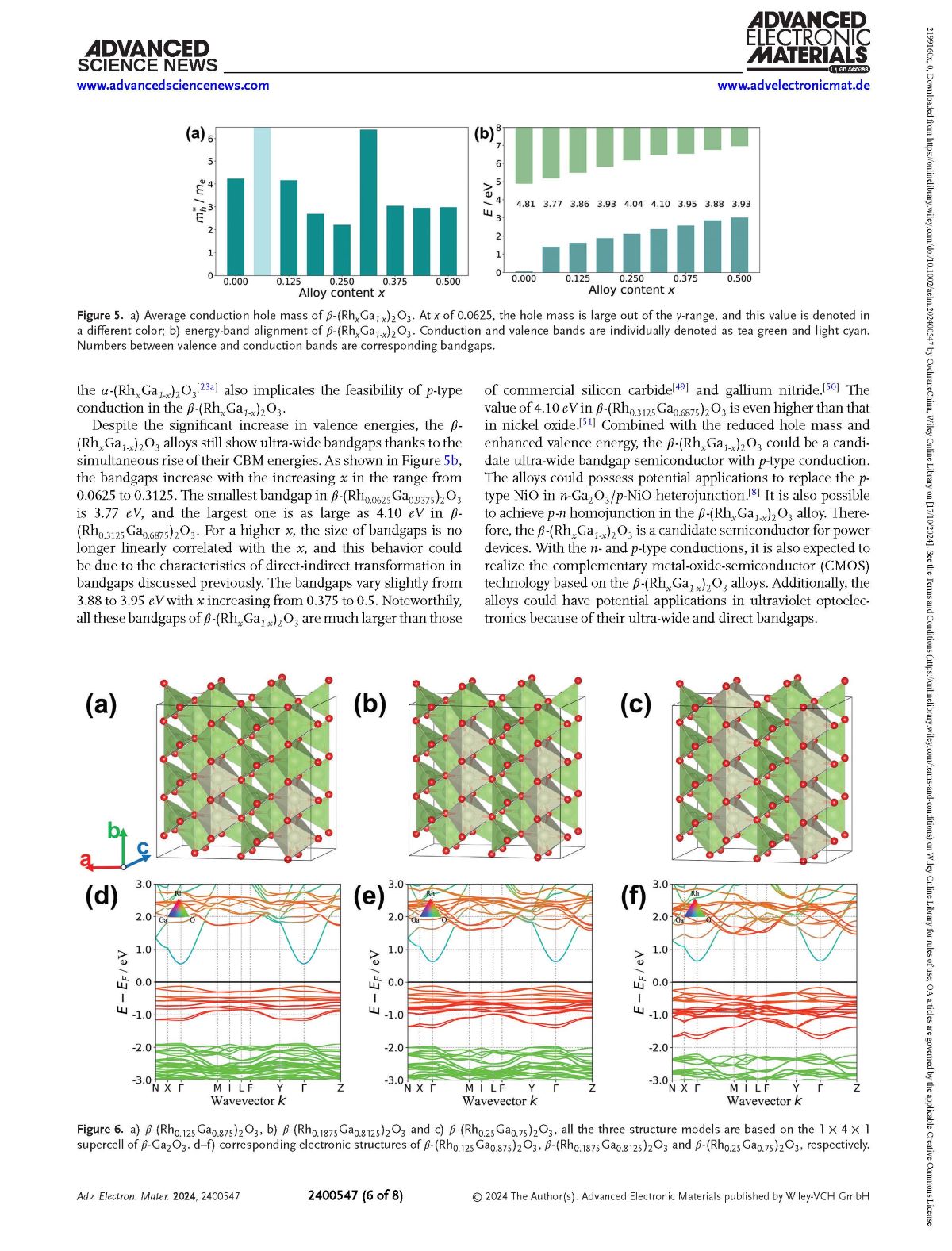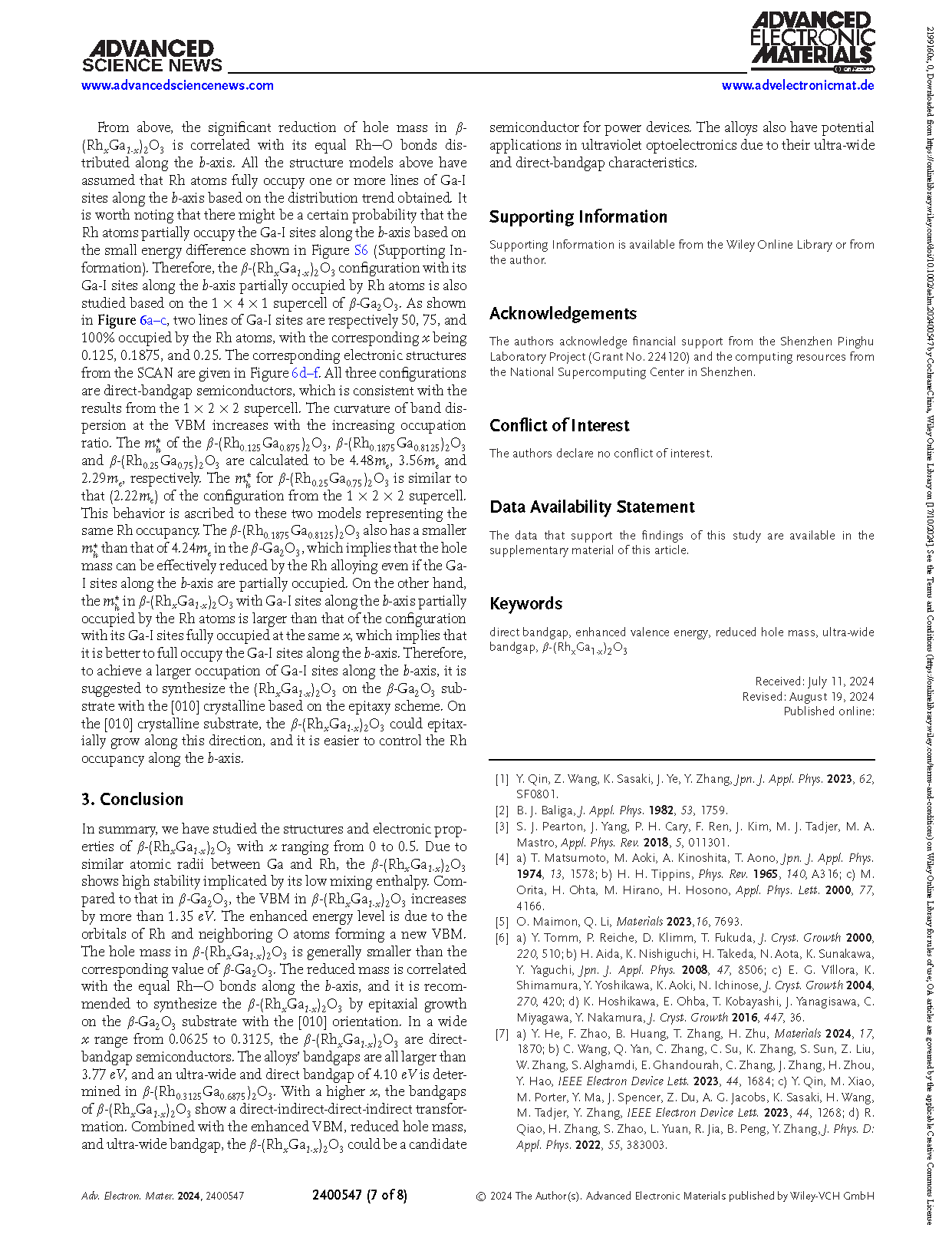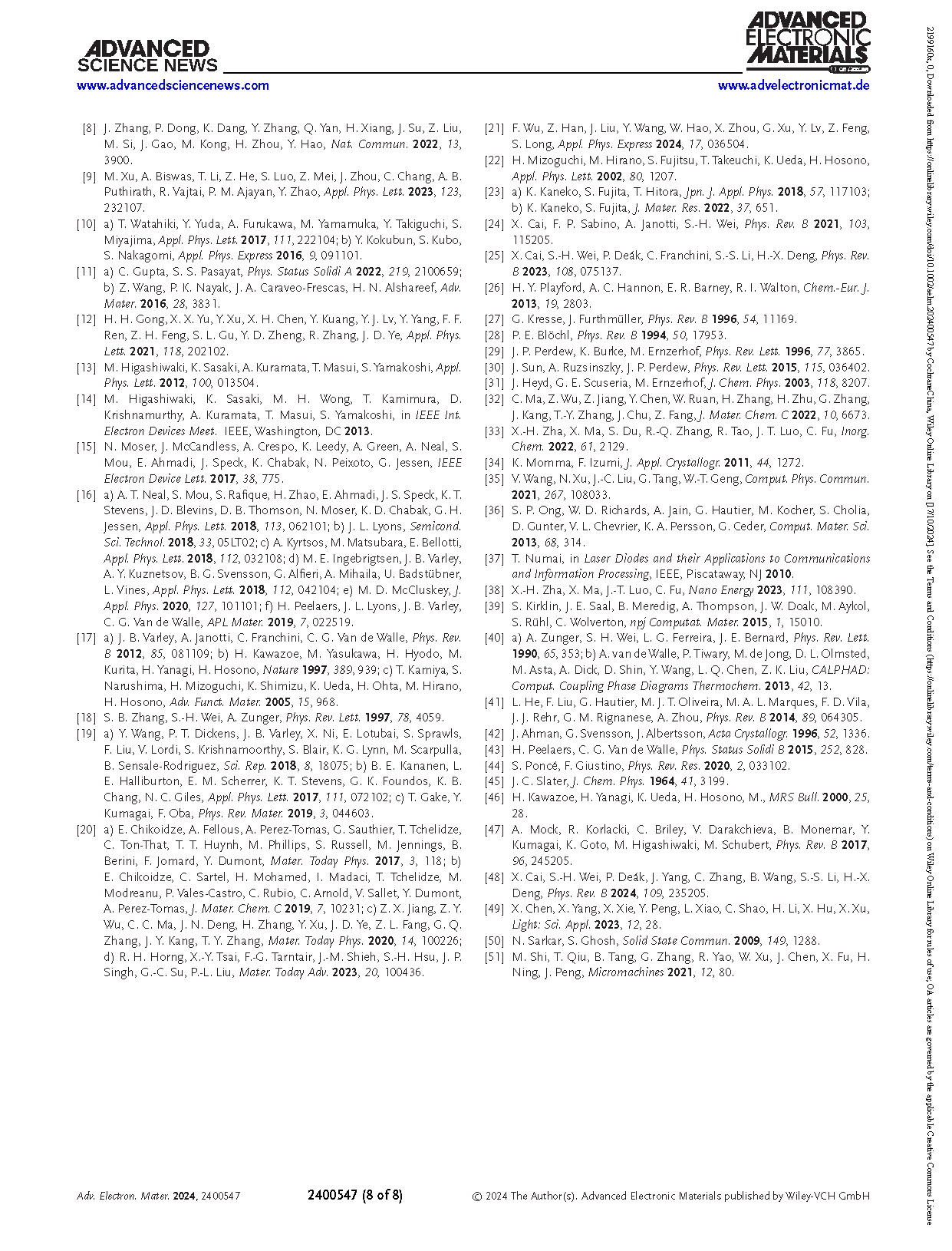
【Member Papers】 Shenzhen Pinghu Laboratory —— Rhodium-Alloyed Beta Gallium Oxide Materials: New Type Ternary Ultra-Wide Bandgap Semiconductors
日期:2024-12-23阅读:440
Researchers from the Shenzhen Pinghu Laboratory have published a dissertation titled "Rhodium-Alloyed Beta Gallium Oxide Materials: New Type Ternary Ultra-Wide Bandgap Semiconductors" in Advanced Electronic Materials.
Abstract
Beta gallium oxide (β-Ga2O3) is an ultra-wide-bandgap semiconductor with advantages for high-power electronics. However, the power resistance of β-Ga2O3-based devices is still much lower than its material limit due to its flat band dispersion at its valence band maximum (VBM) and the difficulty for p-type doping. Here, β-Ga2O3-based new type ternary ultra-wide bandgap semiconductors: β-(RhxGa1-x)2O3’s alloys are reported with x up to 0.5. The energy and band-dispersion curvature of β-Ga2O3’s VBM are significantly enhanced via Rh-alloying. Compared to that in β-Ga2O3, the β-(RhxGa1-x)2O3’s VBMs increase more than 1.35 eV. The hole mass of β-(Rh0.25Ga0.75)2O3 is only 52.3% of that in β-Ga2O3. The decreased hole mass is correlated with the equal Rh─O bond along the b-axis. Thanks to the simultaneous rise of conduction band minimums, the bandgaps of β-(RhxGa1-x)2O3 are still much larger than that in commercial silicon carbide. Moreover, the alloys show direct bandgaps in a wide range of x, and a direct and ultra-wide bandgap of 4.10 eV is determined in β-(Rh0.3125Ga0.6875)2O3. Combined with the enhanced valence energy, reduced hole mass, and ultra-wide bandgap, the β-(RhxGa1-x)2O3 can be candidate semiconductors for a new generation of power electronics, ultraviolet optoelectronics, and complementary metal-oxide-semiconductor (CMOS) technologies.
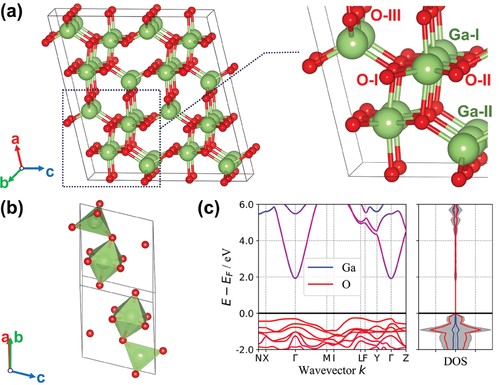
Figure 1. a) A 1 × 2 × 2 β-Ga2O3 supercell based on its conventional unit cell. Two nonequivalent Ga sites and three nonequivalent O sites are denoted in the right part; b) β-Ga2O3 primitive cell; c) Electronic band structure and density of states (DOS) of β-Ga2O3 based on its primitive cell. Blue and red lines show the contributions from Ga and O orbitals, respectively.
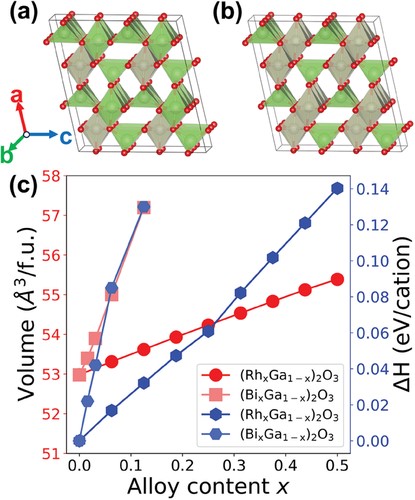
Figure 2.a) β-(Rh0.25Ga0.75)2O3, b) β-(Rh0.5Ga0.5)2O3. The structures are constructed based on the 1 × 2 × 2 supercell of β-Ga2O3. The green and gray areas are for Ga and Rh atoms, respectively. The red ball denotes the O atom. c) Volume per formula unit (red markers) and mixing enthalpy per cation ΔH (blue markers) of β-(RhxGa1-x)2O3 and β-(BixGa1-x)2O3. The values for β-(BixGa1-x)2O3 are from Cai's work.
DOI:
doi.org/10.1002/aelm.202400547
